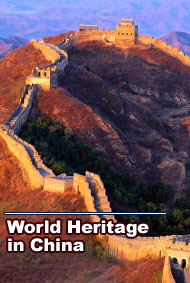
|
|
|
Xinjiang Uyghur Muqam
Masterpiece of the Oral and Intangible Heritage of Humanity The Art of Chinese Xinjiang Uyghur Muqam is a representative name of various kinds of Muqam in Northwest China's Xinjiang Uyghur Autonomous Region, where people contrived this musical complex with songs, dances, and music. Muqam music is not only an artistic creation with a long history, but also a record of communication between China and the countries to the west of it in human history. It can be found in 19 countries and regions in Central, South, and West Asia, and North Africa, and along the ancient Silk Road running across the autonomous region. In November of 2005, UNESCO (United Nations Educational, Cultural and Scientific Organization) proclaimed the Art of Chinese Xinjiang Uyghur Muqam as a masterpiece of the Oral and Intangible Heritage of humanity (a UNESCO program that ensures that the best of every country's traditions is preserved, developed and made known to the outside world). Origin Known as the "mother of Uygur music," the Twelve Muqam has a long history. Some scholars believe its origin can be traced back to the "Great Western Region Melody" that flourished during the Han (206BC-220AD) and Tang (618-907) dynasties and enjoyed a high popularity in Central China. In the mid-16th century, the imperial concubine of the Yarkant Kingdom devoted all her efforts to collecting and compiling Muqam music, which was then scattered across Uygur-populated areas. Amannisahan herself was an esteemed poetess and musician. With the help of other musicians, she finally worked out 12 grand, light, and entertaining compositions that are now known as the Twelve Muqam. The Artistic Value of Muqam Uygur folk Flavor While Muqam is a musical form that has spread in Islamic areas throughout the world, the Twelve Muqam carries distinct Uygur characteristics. Since its spread among the Uygurs, the Twelve Muqam has played an inseparable role in the people's lives. They dance to the accompaniment of the Twelve Muqam and sing songs and ballads to their melodies. Muqam is usually performed by a small ensemble of singers, led by the lead singer (the Muamchi) and accompanied by plucked or bowed lutes and a dap frame drum; they may also be played in instrumental form by kettle drum and shawm (a kind of wind instrument) bands. Playing the Muqam is not reserved to an exclusive group of professional musicians; historically it was performed in folk contexts as well as in the courts of local kings. Men and women, beggars, and respected religious men may practice this tradition, and Muqam is often referred to in terms of both spiritual and physical need. Listening to Muqam can still serve a religious and meditative function, especially in the context of Xinjiang's great religious festivals. What is significant about its compilation is that Amannisahan did not borrow material from the wealthy and fully developed Arabian and Persian repertoires. Instead, she exploited the rich resources of Uygur folk music spread out in the wide area in the north and south of the Tian Mountains. As a result, the Twelve Muqam is especially distinct due to its strong Uygur flavor. Diversity Xinjiang Uyghur Muqam is a composite of songs, dances, and folk and classical music, and is characterized by diversity of content, dance styles, musical morphology, and instruments used. The songs vary in rhyme and meter and are performed solo as well as in groups. The lyrics contain not only folk ballads but also poems written by classical Uyghur masters. Thus, the songs reflect a wide range of styles such as poetry, proverbs, folk narrative, and popular topics such as the praise of love and contemplation on life, reflecting the history and contemporary life of the Uyghur society. |